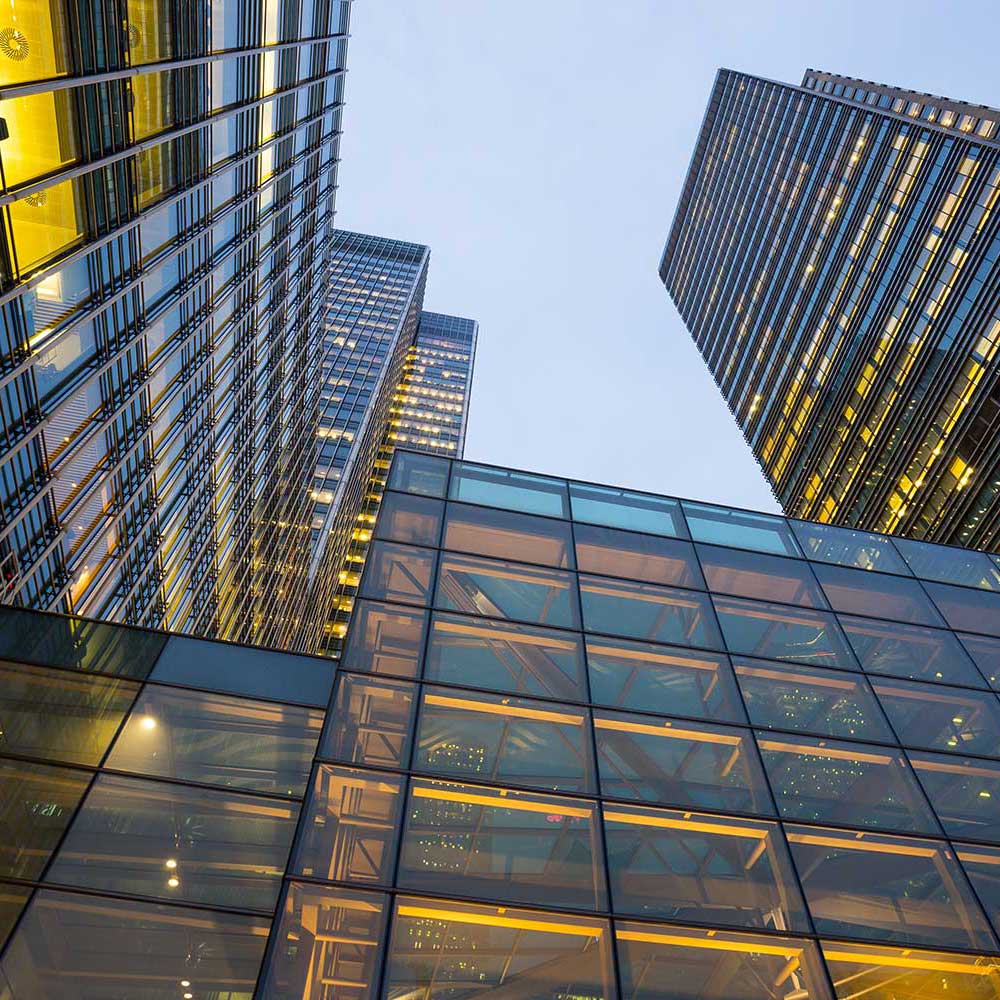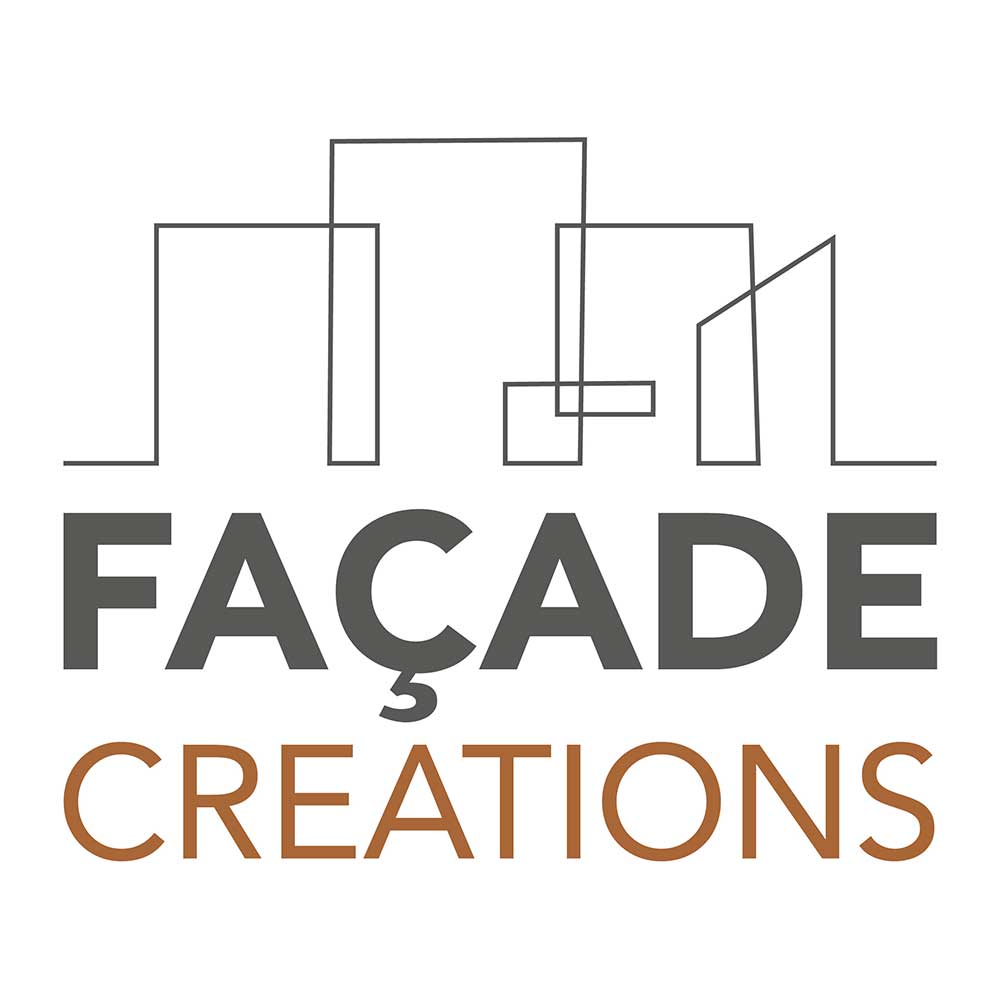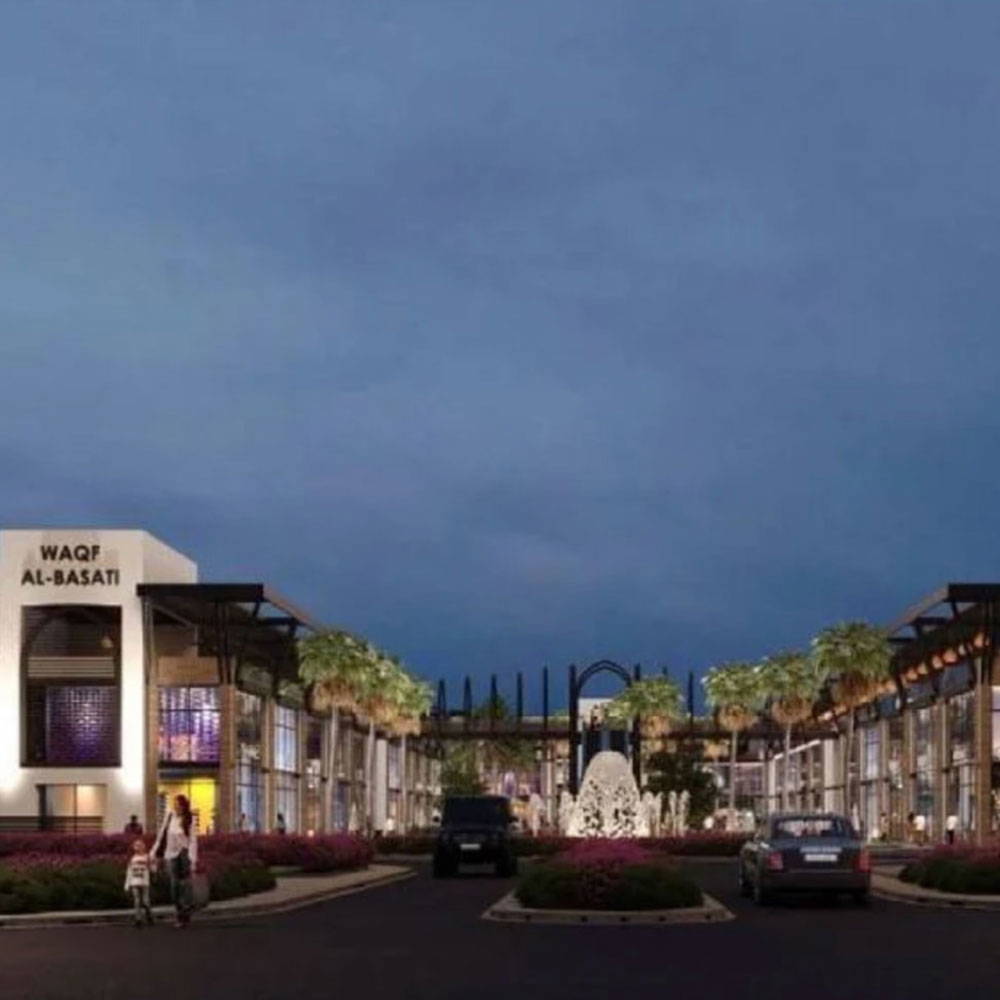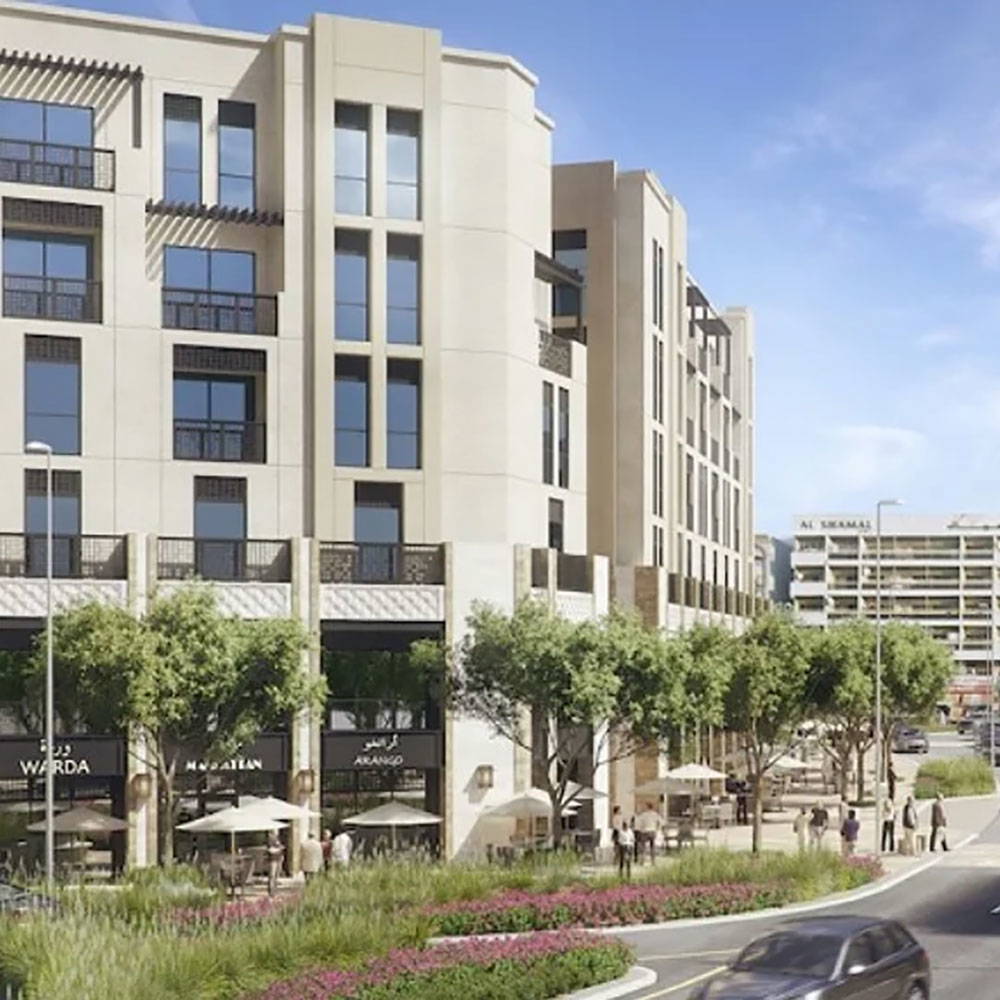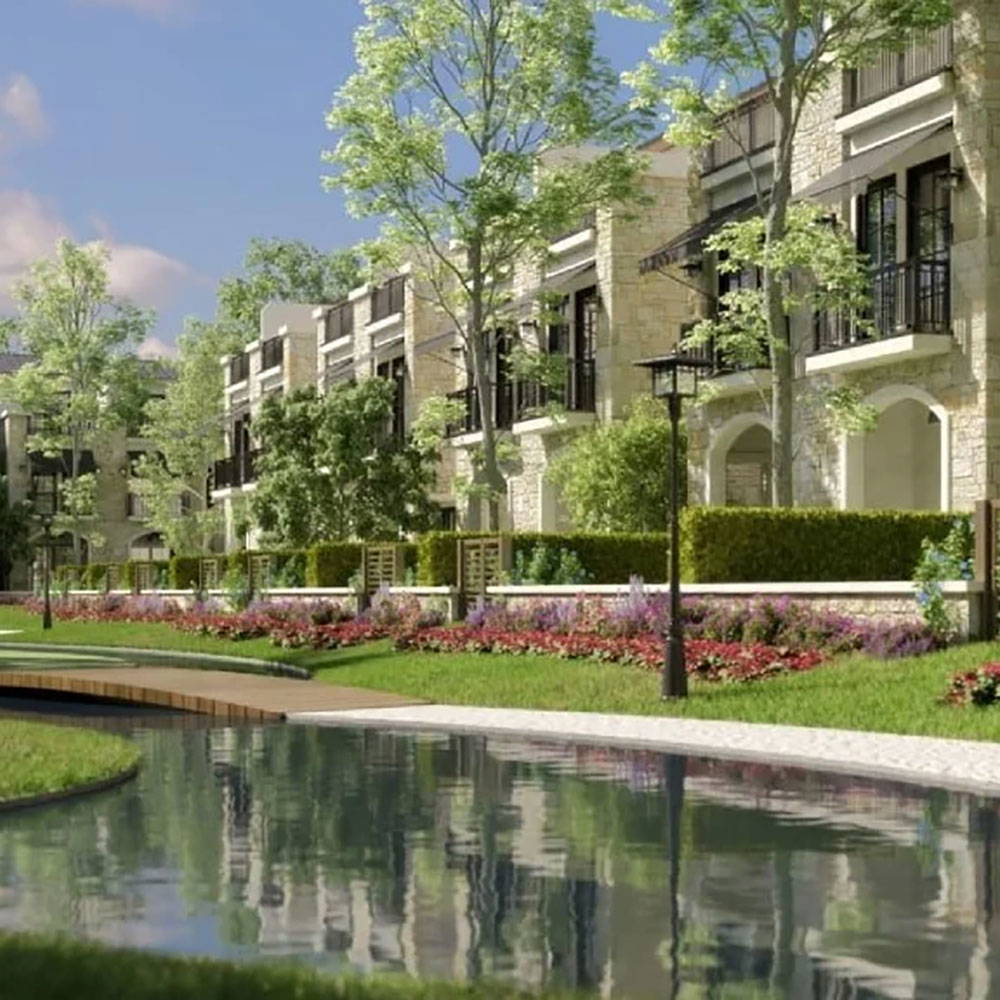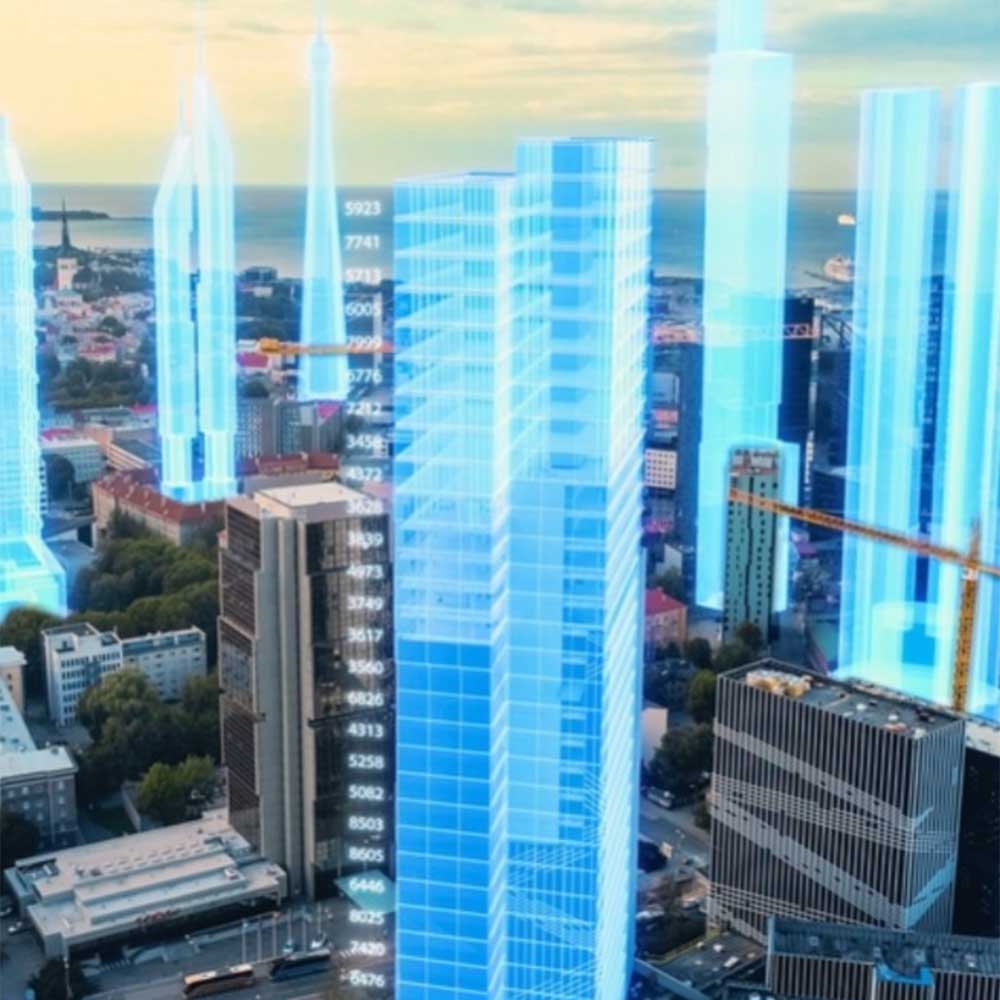Health and Safety Policy
Façade Creations Ltd is committed to ensuring the health, safety and welfare of all employees, contractors, visitors and the public in all our activities. This policy explains how Façade Creations will comply with UK health and safety law and industry best practice in the design, manufacture, and installation of bespoke aluminium façades. It applies to all offices, factory premises and construction sites under our control. Our top management will lead by example and allocate sufficient resources to implement this policy effectively. We will identify hazards, assess and control risks, consult and train our workforce, provide safe systems of work, and review our arrangements to achieve continual improvement. We will communicate this policy to all staff and make it available to interested parties.
Policy Statement and Objectives
Façade Creations Ltd will, so far as is reasonably practicable, ensure the health and safety of our employees, contractors, visitors and others affected by our work. This obligation derives from the Health and Safety at Work etc. Act 1974 (HSWA 1974) and related legislation. Under HSWA 1974 and subordinate regulations, employers must provide safe plant and systems of work, safe handling of materials, adequate information, instruction, training and supervision, and a safe working environment. We commit to these duties and to promoting a safety culture within our business.
- Legal Compliance: We will comply with HSWA 1974 and all applicable regulations (including Management of Health and Safety at Work Regulations 1999, Work at Height Regulations 2005, Provision and Use of Work Equipment Regulations 1998, Lifting Operations and Equipment Regulations 1998, Manual Handling Regulations 1992, Control of Substances Hazardous to Health (COSHH) Regulations, First-Aid Regulations 1981, and others as relevant). Our compliance will follow HSE guidance and industry best practice at all times.
- Risk Management: We will identify workplace hazards, assess risks, and implement control measures to eliminate or reduce risks to the lowest reasonable level. Risk assessments will be “suitable and sufficient” in accordance with the Management Regulations.
- Employee Involvement: We will consult and involve employees (or their representatives) on health and safety matters, as required by law. We recognise that employee feedback and worker participation are vital in identifying hazards and improving safety.
- Training and Competence: We will ensure that all workers have the necessary information, instruction, training and supervision for their roles. No one will be expected to carry out work for which they are not competent or trained. Where necessary, we will appoint or engage competent persons to advise on health and safety.
- Communication: This policy will be communicated to all employees and made available to contractors and visitors. Changes to the policy will be shared promptly. We will display or distribute key safety information (e.g. emergency arrangements, safety rules) as required.
- Review and Improvement: We will monitor health and safety performance and review this policy at least annually or whenever there are significant changes to the business. We will act on lessons learned from incidents or near-misses to improve our safety management.
Scope of the Policy
This policy covers all Façade Creations operations in the UK, including:
- Design Offices: Where façade systems are planned and engineered (including use of display screen equipment and handling of design materials).
- Manufacturing Facilities: Our factory where aluminium components are fabricated, welded, painted, or assembled (involving machinery, hazardous substances, manual handling, etc.).
- Construction Sites: Installation of façades on buildings (a construction activity subject to the Construction (Design and Management) Regulations 2015).
- Administrative and Support Areas: General office spaces, meeting rooms, warehouses, warehouses, and visitor areas.
All employees, contractors, temporary workers, visitors and other affected persons are required to comply with this policy and any associated safe system of work. Contractors and sub-contractors engaged by Façade Creations must follow our site rules and carry out their work in accordance with this policy and relevant regulations. Visitors must follow the instructions of Façade Creations staff and take reasonable care for their own safety and that of others.
Health and Safety Management Structure
Clear allocation of responsibility is key to effective safety management. Façade Creations will implement the following structure:
- Directors and Senior Management: Ultimate responsibility for health and safety rests with the Managing Director and the Board. They will ensure compliance with HSWA 1974 duties towards employees and the public. They will approve this policy, allocate resources, and ensure it is reviewed. Directors must ensure that the organisation has competent personnel, adequate funding and high-level oversight of health and safety performance.
- Health & Safety Manager / Advisor: A designated competent person (or team) will be appointed to manage health and safety. They will advise on legal duties, conduct risk assessments, organise training, monitor compliance, and report on performance. They act as a point of contact for HSE inspectors and external audits.
- Operations Managers / Supervisors: Line managers and supervisors at offices, the factory, and sites must implement this policy day-to-day. They are responsible for ensuring safe systems of work, conducting safe inspections, providing training and PPE, supervising staff and contractors, and addressing hazards promptly. They must enforce safety rules and stop unsafe work.
- Employees: All employees must take reasonable care of their own health and safety and that of others (HSWA 1974, Section 7). This includes using equipment and PPE properly, following instructions, reporting hazards or incidents immediately, and co-operating with Façade Creations’ safety arrangements. Employees must not intentionally or recklessly interfere with anything provided for safety.
- Contractors and Subcontractors: When on our premises or work sites, contractors must comply with this policy, CDM 2015 duties, and our site rules. They must ensure their workers are competent, trained and supervised, and must report hazards or incidents. Contractors have duties under CDM 2015 to plan, manage and monitor their work so that it is carried out safely.
- Visitors: Visitors (including delivery drivers, clients or members of the public) must comply with this policy as far as reasonably practicable. They must follow safety instructions and signage, and behave responsibly (e.g. not smoking in prohibited areas, not tampering with equipment).
Legal and Regulatory Framework
We recognise that health and safety in Great Britain is governed by HSWA 1974 and many specific regulations. Key statutory requirements relevant to our activities include the following:
Health and Safety at Work etc. Act 1974 (HSWA 1974)
The HSWA 1974 is the primary piece of legislation for workplace health and safety. It imposes duties on employers (ourselves) to ensure, so far as reasonably practicable, the health, safety and welfare of employees at work and others affected by our operations. This includes providing safe plant, systems of work and work environments; safe equipment; adequate training, information, instruction and supervision; and monitoring health and safety measures. Under HSWA, employees also have duties to take care of themselves and others and to co-operate with the employer. All officers of the company (e.g. directors) can be held personally liable for breaches of HSWA duties.
Specifically, we commit to compliance with the general duties of employers (HSWA Section 2) which include:
- Provision and maintenance of safe plant and equipment.
- Safe use, handling, storage and transport of materials.
- Provision of information, instruction, training and supervision for safety.
- Maintenance of a safe working environment with adequate welfare facilities (Section 3).
- Ensuring that non-employees (e.g. visitors, contractors) are not exposed to health and safety risks created by our operations (Section 4).
The HSWA is enforced by the Health and Safety Executive (HSE) and local authorities. We will cooperate with regulatory inspections and follow any enforcement notices.
Management of Health and Safety at Work Regulations 1999 (MHSWR 1999)
These regulations supplement HSWA and set out management duties. Key requirements include:
- Risk Assessment: We must carry out “suitable and sufficient” risk assessments of all work activities to identify hazards and control risks. This applies to employees and others affected by our work. Risk assessments will be documented where five or more employees are present, and updated periodically or when conditions change.
- Competent Person: We must appoint one or more competent persons to implement health and safety measures. Our H&S manager/advisor fulfils this role, and we may also obtain external specialists for complex tasks.
- Health and Safety Arrangements: The regulations require planning, organisation, control, monitoring and review of preventive measures. We will establish written arrangements (via this policy and procedures) covering training, emergency arrangements, equipment maintenance, consultation, etc.
- Information and Training: We will provide employees with health and safety information (e.g. safe work procedures, COSHH data sheets) and training on induction and whenever duties change. Records of training will be kept.
- Monitoring and Review: Management will regularly inspect work areas, review risk assessments and investigate incidents to ensure controls are effective and lessons are learned.
MHSWR 1999 also explicitly requires employers to make arrangements for health surveillance where needed (for example, if workers are exposed to hazardous substances or excessive noise) and to provide health and safety assistance (Regulation 7). We will meet these requirements.
Risk Management: Under the Management Regulations, we adhere to the principle that one must “identify what could cause injury or illness (hazards), decide how likely it is someone could be harmed and how seriously (the risk), and take action to eliminate or control the hazard”. This is integrated into our processes for design, manufacture and installation. For example, work at height and handling of heavy panels are treated as high-risk tasks requiring thorough planning.
Construction (Design and Management) Regulations 2015 (CDM 2015)
Because Façade Creations carries out construction work when installing façades, CDM 2015 applies. This regulation aims to improve planning and management of construction projects for safety. Under CDM 2015:
- Client Duties: When we act as clients (e.g. we have façade work carried out on our premises), we ensure that projects are managed safely from the start. This includes appointing a competent Principal Designer and Principal Contractor, ensuring adequate resources and time are allocated for health and safety, and making sure construction work is notified to HSE when required.
- Designer Duties: In our capacity as façade designers, we must eliminate, reduce or control foreseeable risks through design. This includes specifying safe fixings, avoiding unnecessary hazardous materials, and providing information on residual risks to the installers.
- Principal Contractor Duties: If Façade Creations acts as Principal Contractor (managing a site with multiple contractors), we will prepare a Construction Phase Plan and ensure coordination of all contractors.
- Contractor Duties: As a contractor on any construction site, we will “plan, manage and monitor all work carried out by ourselves and our workers, taking into account the risks to anyone who might be affected… and the measures needed to protect them”. We ensure our staff and subcontractors are competent, inducted, supervised, and equipped with information and instructions. We will not allow work to start until permits, barriers and access controls are in place, and we will maintain welfare facilities at the site. In multi-contractor projects, we will cooperate fully with the Principal Contractor and follow the project’s Construction Phase Plan.
CDM 2015 also requires notification of the project to the HSE (via an F10 form) if the project lasts longer than 30 working days with more than 20 workers on site simultaneously, or exceeds 500 person-days. Façade Creations will ensure compliance with any notification requirements for our projects.
Work at Height Regulations 2005
Our installation work often involves work at height (e.g. erecting façades on buildings, using scaffolds, ladders, MEWPs). We will comply with the Work at Height Regulations 2005, whose purpose is “to prevent death and injury caused by a fall from height”. Under these regulations:
- All work at height must be properly planned and organised, taking account of weather and site conditions.
- Only competent persons (trained and authorised) may carry out work at height.
- The risks must be assessed first and measures taken to avoid working at height where possible. If working at height cannot be avoided, we will use work equipment or other measures to prevent falls or arrest falls safely. This includes using scaffolds, edge protection, harness systems, or MEWPs as appropriate.
- Equipment used for work at height must be the right type (e.g. scaffold complies with BS EN standards, ladders for short-duration tasks only, etc.) and properly inspected before use.
- Those with control of the work (employer, site manager) must ensure the work is supervised and carried out safely.
We ensure all installers are trained in safe working at height (including any subcontractors). We also maintain records of inspections of scaffolding, ladders, harnesses and other equipment. Any accident or near miss involving falls will be investigated and reviewed. As HSE advises, when working at height “employers and those in control…must make sure work is properly planned, supervised and carried out by competent people”, and that employees “take reasonable care of themselves and others”.
Provision and Use of Work Equipment Regulations 1998 (PUWER)
In our factory, offices and on site we use various equipment (machinery, tools, vehicles, lifting gear). PUWER 1998 requires that such work equipment is safe and used properly. The key duties of PUWER include:
- Equipment must be suitable for its intended use and properly maintained. It must be inspected regularly (for example, monthly or before each use for mobile equipment) to ensure it remains safe.
- Equipment must only be used by people with adequate information, instruction and training. Written instructions or markings (e.g. on machinery) must be provided as necessary.
- Machines must have appropriate guards and safety devices. For example, moving parts must be guarded or have emergency stops, and dangerous parts should be prevented from being touched by routine means.
- Before equipment is installed or moved, it must be inspected and tested to verify it is safe (for example, checking electrical machinery or after reassembly of a crane).
- Any lifting equipment (hoists, cranes, forklifts) falls under both PUWER and the Lifting Equipment and Lifting Operations Regulations (LOLER), and thus must also meet LOLER’s inspection requirements.
We commit to following PUWER guidance. All workplace machinery (e.g. saws, presses, welding plant) will have maintenance logs and records, and will be used only by trained personnel. Supervisors will enforce lock-out/tag-out procedures for any servicing (permanent means of isolation) and ensure guards are in place. Equipment manuals and CE conformity for new machines will be checked.
Lifting Operations and Lifting Equipment Regulations 1998 (LOLER)
LOLER governs the use of lifting equipment (cranes, hoists, slings, etc.) in Britain. It requires that all lifting operations are properly planned, supervised and carried out safely by competent people. In practice:
- Any lifting equipment we use must be fit for purpose and appropriate. It must be of adequate strength and stability for the loads (e.g. panel weights).
- Lifting operations (e.g. lifting a façade panel into place) must be planned by a trained supervisor or banksman, with attention to risk of dropped loads or collisions.
- Lifting equipment must be subject to statutory “thorough examinations” by a competent person at required intervals (for example, before first use, and then every 6 or 12 months depending on the load and usage). Façade Creations will keep records of all LOLER examinations. Any defects found must be reported immediately and equipment withdrawn if unsafe.
- Where persons may be lifted (e.g. using a mobile elevating work platform for access), special LOLER provisions apply: the equipment must be checked more frequently and the task assessed for risk of ejection or fall.
LOLER also incorporates PUWER obligations, so maintenance of lifting equipment follows the same safe-use rules. We ensure that our forklift trucks, cranes, lifts, vacuum lifters and scaffolding hoists meet both PUWER and LOLER requirements.
Manual Handling Operations Regulations 1992
Employees at our factory and sites may need to move heavy or awkward materials (façade panels, crates, raw stock). To comply with Manual Handling Regulations, we will:
- Avoid hazardous manual handling where possible (e.g. by using lifting aids, trolleys, or team lifts).
- Assess manual handling tasks to identify risks of injury. Our risk assessments will cover load weight, frequency, posture, and environment.
- Reduce the risk by improving processes or equipment where practicable – for example, storing items at waist height to avoid bending.
- Train staff in safe handling techniques (proper lifting posture, use of handling aids).
- Provide mechanical aids (forklifts, hoists, conveyors) and manual handling equipment (dollies, pallet trucks) as appropriate.
- Issue Personal Protective Equipment (gloves, boots) when needed to improve grip or support.
As HSE guidance summarises, employers “must comply with the Manual Handling Operations Regulations 1992… [and] avoid, assess and reduce the risk of injury from manual handling”. Our injury records will be monitored for any musculoskeletal issues and additional controls (such as health surveillance or physiotherapy access) will be considered if needed.
Control of Substances Hazardous to Health (COSHH) Regulations 2002
In the design and manufacture of aluminium façades, we may use solvents (for cleaning or painting), adhesives, welding fumes, paints, and other chemicals. We will comply with COSHH by:
- Identifying hazardous substances: All materials with potential health effects (e.g. paints, solvents, metal dust, welding fume) will be listed and assessed.
- Risk Assessment: For each hazardous substance or process, a COSHH risk assessment will be performed. This involves evaluating health risks (inhalation, skin contact, etc.) and determining control measures.
- Control Measures: Where possible, we will use less hazardous alternatives. Otherwise, we will apply controls such as local exhaust ventilation (e.g. fume extractors for welding), enclosure, or PPE (respirators, gloves).
- Training and Information: We will provide safety data sheets and training on handling hazardous substances. Employees will understand the signs of exposure and the need for hygiene (e.g. no eating in production areas, washing hands after handling chemicals).
- Health Monitoring: If substances pose inhalation or skin risks (e.g. isocyanate sprays or chromium in aluminium anodizing), appropriate health surveillance will be arranged by occupational health professionals.
- Maintenance of Controls: Ventilation and equipment will be regularly checked. Spill kits and eyewash stations will be provided if needed.
As HSE states, COSHH “requires employers to plan, manage and monitor the substances hazardous to health”. We will keep records of COSHH assessments and review them whenever processes change or new substances are introduced.
Reporting of Injuries, Diseases and Dangerous Occurrences Regulations 2013 (RIDDOR)
Façade Creations must report certain work-related incidents to the HSE under RIDDOR. We will comply by:
- Reporting to HSE: The company (as the employer or person in control of premises) is responsible for RIDDOR reporting. We will report to HSE without delay:
- Work-related fatalities.
- Specified injuries to employees (e.g. fractures, amputations, serious burns, etc.).
- Over-7-day injuries to employees (where the person is off work or incapacitated for more than 7 days).
- Injuries to non-employees if they involve fractures or hospital admissions.
- Occupational diseases diagnosed by a doctor (e.g. hand-arm vibration syndrome from tools, occupational asthma, etc.).
- Dangerous occurrences (specified near-miss events, like failure of lifting equipment).
- Internal Procedures: All employees are instructed to report any work-related injury or near miss to their manager immediately. Managers will ensure incidents are recorded (accident books/records) and investigated. A designated RIDDOR officer (our H&S manager) will determine which incidents require statutory reporting.
- Example Duty: As guidance notes, “If you are an employer, you must report any work-related deaths, and certain work-related injuries, cases of disease, and near misses involving your employees wherever they are working”. We will follow HSE’s online reporting system and keep copies of all reports.
- Enforcement: Failure to report a RIDDOR incident when required can lead to enforcement action. If an employee suspects an incident has not been reported appropriately, they can raise the issue through health & safety representatives or directly with HSE.
All managers and supervisors will be trained in the RIDDOR requirements and our internal process. We will also use RIDDOR data to analyze accident trends and prevent recurrences.
Specific Control Measures and Arrangements
To meet our legal duties, Façade Creations has established the following arrangements:
Risk Assessments and Safe Systems of Work
We will carry out risk assessments for all significant activities, including office work, factory processes, and construction tasks. Assessments will identify hazards (e.g. electrocution, falls, manual handling injuries, exposure to noise or chemicals) and evaluate risks. Control measures will follow the hierarchy: eliminate the hazard, substitute safer methods/materials, implement engineering controls, use administrative controls (instructions, supervision), and provide PPE. For example:
- Office Areas: Assessments for workstation ergonomics (to prevent DSE-related strain) will be done; the employer will provide adjustable chairs and carry out DSE assessments for desk staff.
- Production Workshops: Assessments will cover machinery guarding (PUWER), noise levels (if loud processes are used, we may provide ear protection), welding fumes (ventilation), and manual tasks. We will implement written safe work procedures for high-risk tasks (e.g. operating lathes or spray booths).
- Construction Sites: A site-specific construction phase risk assessment will be part of the Construction Phase Plan (CDM 2015). This will cover hazards like work at height, falling materials, vehicle movements, and public access. We will establish and enforce safe routes, barriers, and exclusion zones on sites.
Risk assessments will be reviewed whenever there is an accident, change of equipment, introduction of new substances, or on a regular schedule. Where regulations require (for example, for COSHH or work equipment), we will ensure detailed documentation and records are kept.
Training, Instruction and Competence
All staff will receive appropriate training:
- Induction: New employees and contractors receive site-specific induction covering our safety rules, emergency procedures, first-aid arrangements, and how to report hazards or incidents.
- Job Training: Specific training is provided before an employee performs a task (e.g. forklift operation, welding training, working at height) or when moving to a new role.
- Refresher Training: Safety-critical training (e.g. CPR, fire marshal, equipment use) is refreshed periodically.
- Competence: We verify that anyone performing work has the skills and qualifications needed. For example, crane operators hold valid certificates, scaffolders have CISRS certification, and facade installers have training in façade rigging techniques.
- Awareness: We provide toolbox talks and safety bulletins on relevant topics (e.g. seasonal hazards, changes in procedure, reminders on reporting).
- Leadership Training: Supervisors and managers receive additional training on their health and safety responsibilities and how to conduct inspections/investigations.
We keep records of all training and certificates. If external advice is needed (such as legal changes or specialist expertise), we will consult competent advisers.
Health Surveillance and Welfare
Where health risks have been identified (e.g. regular exposure to welding fume or loud machinery), occupational health surveillance will be provided. This may include lung function tests, skin checks, or audiometry, as recommended by health professionals.
We will also ensure adequate welfare facilities under the Workplace (Health, Safety and Welfare) Regulations 1992. This includes:
- Toilets and Handwashing: Providing a sufficient number of clean toilets and washbasins. For example, HSE guidance specifies employers must provide “enough toilets and washbasins for those expected to use them” with running water, soap and means to dry hands. Façade Creations will ensure separate male/female facilities or unisex lockable rooms, with sanitary disposal units.
- Rest Areas: A clean rest area with seating where employees can eat and drink (away from hazardous operations). We will provide drinking water and allow breaks in a safe area.
- Changing Rooms and Showers: If work is dirty (e.g. painting), changing facilities and showers will be provided. Our factory will have segregated lockers/changing rooms.
- Ventilation, Heating and Lighting: Work areas will be heated, ventilated and lit to a reasonable standard for the type of work (meeting the general workplace welfare requirements). Offices will have adequate daylight or artificial lighting, and production areas will have local extract ventilation for dust/fumes.
- First Aid: See below, but welfare includes first-aid provisions.
By meeting these welfare requirements, we ensure our legal duty to protect employees’ dignity and well-being. HSE clarifies that these regulations cover “a wide range of basic health, safety and welfare issues”.
Personal Protective Equipment (PPE)
Where other controls cannot adequately reduce risks, we will provide suitable PPE free of charge to employees. This includes:
- Head Protection: Hard hats for all personnel on construction sites or on factory floors where overhead hazards exist.
- Eye and Face Protection: Safety glasses or face shields for grinding, welding, or chemical handling, as appropriate. Welding helmets with proper filters for welders.
- Hearing Protection: Ear defenders or earplugs for noisy tasks (e.g. metal cutting, press brake operation).
- Hand Protection: Gloves appropriate to tasks (cut-resistant gloves for sheet handling, chemical-resistant gloves for solvents, welding gloves for heat).
- High-Visibility Clothing: Hi-vis vests or jackets on sites and in the factory where vehicles operate.
- Foot Protection: Steel-toe safety boots on factory and site.
- Fall Protection: Harnesses and lanyards for work at height where scaffolds or platforms are not feasible.
- Respiratory Protection: Respirators or masks for dust, fumes or solvents as required by COSHH controls.
PPE will be CE-marked and appropriate to the hazard. Employees will be trained in proper use, fitting and maintenance (e.g. replacing filters). Management will ensure adequate stocks are kept and used correctly. PPE is the last line of defence and will be used in conjunction with engineering and administrative controls.
Work Equipment and Machinery Safety
All machinery and vehicles on site or in the factory must comply with PUWER (as above). In particular:
- Inspections and Maintenance: Regular maintenance schedules and inspections will be in place. For example, workshop machines and factory equipment will have documented maintenance logs. Mobile equipment (e.g. company vans, forklifts) will receive periodic inspections (e.g. M.O.T. for vehicles, LOLER checks for lifting devices).
- Safe Guarding: Moving parts on machines will be properly guarded, and emergency stop buttons will be tested. Supervisors will enforce that guards are never bypassed.
- Machine Training: Only trained operators will use machinery. For hazardous machines (woodworking equipment, presses), use will be restricted to those trained and authorised, as PUWER mandates.
- Mobile Work Equipment: Cranes, forklifts, scaffolds, lifts, etc., will be maintained per manufacturer’s recommendations. Records of inspections (as required by LOLER and PUWER) will be kept.
- Vehicles: Company vehicles will be legally maintained and drivers must hold valid licences. Loading and unloading practices will follow safe manual handling procedures or vehicle liftgates to prevent injuries.
Asbestos, Electricity, and Other Hazards
Although asbestos is unlikely in new façade work, any refurbishment projects on older buildings may uncover asbestos. If we suspect asbestos, work will stop and a licensed specialist consulted. We will follow the Control of Asbestos Regulations if asbestos is present on site.
Electrical safety is managed by regular testing of portable appliances (PAT testing) and fixed wiring inspections, and by ensuring no work is done on live electrical parts unless properly isolated.
Communication and Consultation
We will actively communicate health and safety information: through inductions, toolbox talks, noticeboards, and email bulletins. Key documents (policy, fire plan, COSHH assessments, equipment instructions) will be accessible to all.
We comply with the safety consultation regulations. If safety representatives are appointed or trade union representatives exist, we will work with them. Otherwise, we will use other methods (e.g. safety committee or worker meetings) to involve staff. As HSE emphasizes, employers “have a duty to consult with their employees, or their representatives, on health and safety matters”.
We encourage all staff to report hazards or unsafe acts immediately, without fear of reprisal. Management will investigate suggestions and feedback.
Incident Reporting, Investigation and Learning
All accidents, incidents and near misses will be reported internally and investigated to find root causes. We will maintain an accident book, and document investigations. The aim is to identify what went wrong and prevent recurrence.
Significant incidents will be notified to senior management, and, if necessary, to the HSE or other authorities (in accordance with RIDDOR or other laws). We will cooperate with any investigations by enforcing authorities.
Findings from investigations will be communicated to all relevant personnel and used to update risk assessments and procedures. We will track trends (e.g. frequently occurring hazards) and take proactive measures where needed.
Emergency Procedures
Façade Creations will maintain suitable emergency arrangements, which include:
- Fire Safety: We will conduct fire risk assessments for our premises. Fire extinguishers, alarms and escape routes will be provided and maintained. Employees will be trained in evacuation procedures and fire marshal duties. Drills will be held at least annually.
- First Aid: In accordance with HSE guidance, we will provide appropriate first-aid arrangements. At minimum, each workplace will have a stocked first-aid kit, an appointed person (who looks after kits and calls emergency services), and information for employees on first-aid arrangements. In higher-risk areas, we will have trained first-aiders. We will assess our first-aid needs and increase provision if necessary. All employees will be informed of first-aid procedures (locations of kits, names of first-aiders).
- Other Emergencies: We will prepare for other foreseeable emergencies (e.g. chemical spill, medical emergency, extreme weather). Procedures will cover evacuation, shutdown of processes, communication channels, and liaison with emergency services.
Contractors and Subcontractors
All external contractors working for Façade Creations must comply with this policy and site rules. We will ensure that:
- Contractor H&S performance is assessed before appointment (through competence checks and pre-qualification).
- Contracts include health and safety requirements.
- Contractor work is coordinated and supervised on site.
- Contractors participate in site inductions and risk assessments where relevant.
- Temporary labour supplied by agencies is informed of this policy.
We recognise that contractors often carry out higher-risk tasks, so we will specifically monitor them. Under CDM 2015, contractors must notify us of any significant hazards identified in their work and follow the project’s safety plan. As noted by HSE, contractors (including sub-contractors and self-employed) are “most at risk of injury from construction work” and therefore must plan, manage and monitor their work with competence and care. We will hold contractors to this standard.
Monitoring, Review and Continuous Improvement
Health and safety performance will be reviewed regularly. Our monitoring activities include:
- Regular workplace inspections (by managers or H&S reps) using checklists for hazard areas (e.g. machinery guarding, housekeeping, PPE use).
- Monthly H&S meetings at management level to review audit findings, accident reports, and legal developments.
- Annual formal review of this policy and risk assessments, or earlier if there are major changes.
- Seeking feedback from employees on safety issues.
If any weaknesses are found (through audits, incidents, or external review), corrective actions will be taken promptly. We will aim for continual improvement in line with HSE’s expectations of positive health and safety management.
Statutory References and Guidance
Façade Creations will follow UK regulatory guidance and official standards. In particular:
- Health and Safety Executive (HSE) guidance on managing basic safety obligations, RIDDOR reporting, consulting workers, first aid, and construction/CDM matters.
- British Standards and Codes of Practice for facade installation, scaffolding and welding.
- Approved Codes of Practice (ACOPs) and guidance for PUWER, LOLER, COSHH, etc., where applicable.
We will maintain links to relevant HSE publications (e.g. L153 on CDM) and ensure our procedures reflect any updates in legislation. For example, HSE’s ACOP on lifting equipment gives essential status to best practice under LOLER.
Conclusion
Façade Creations Ltd fully recognises that managing health and safety is a fundamental part of our business. This policy sets out a clear framework of duties and arrangements to comply with UK law and protect people. Senior management endorses this policy and expects all employees, contractors and visitors to understand and apply it. By working together, we will achieve our goal of safe, healthy and incident-free operations across all offices, the factory, and construction sites
Contact Us
If you have any questions or concerns about this policy, please contact us.
Our details are:
- Email: info@facadecreations.co.uk
- Postal Address: 124 City Road, London, EC1V 2NX, United Kingdom
- Telephone: +44 (0)116 289 3343
We will do our best to respond promptly and address your concerns.
Last updated: October 2025
